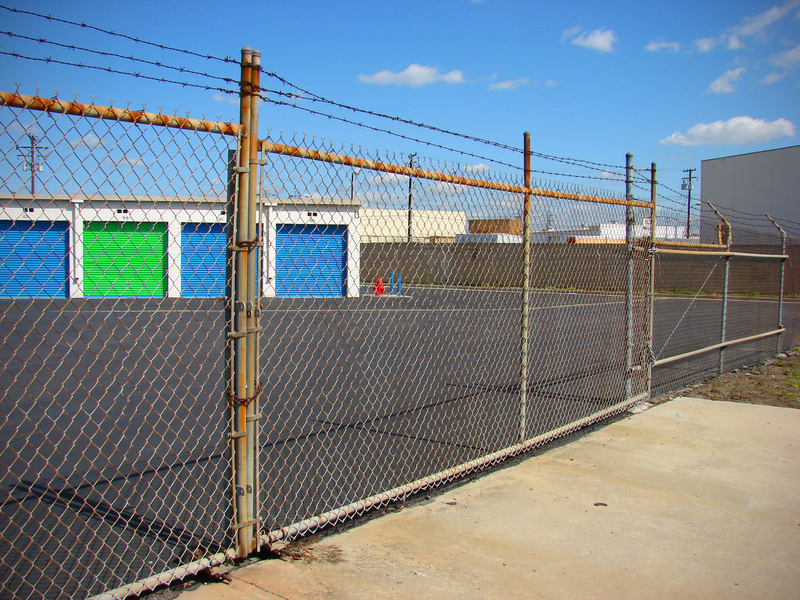Reducing Anxiety with Smart House Moving Techniques
Posted on 19/06/2025
Reducing Anxiety with Smart House Moving Techniques: A Comprehensive Guide
Moving your house is often listed as one of life's most anxiety-inducing events. The stress of packing, logistics, and saying goodbye to a familiar space can make even the most organized person feel anxious and overwhelmed. But what if you could minimize moving stress through smart, strategic approaches? In this article, we will dive deep into actionable, research-backed house moving techniques to reduce anxiety and make your relocation smoother and more enjoyable.

Understanding Moving Anxiety: Why Is Moving So Stressful?
Before tackling ways to lower your anxiety during a move, it's essential to understand why relocating can feel so stressful:
- Uncertainty and Change: Leaving familiar environments creates uncertainty, which naturally elicits anxiety.
- Overwhelm from Tasks: Packing, sorting, cleaning, and coordinating logistics often feel insurmountable.
- Sentimental Attachments: Letting go of a home, neighbors, or memories can create emotional turmoil.
- Fear of the Unknown: Not knowing what your new neighborhood, job, or commute will be like.
Recognizing these sources of anxiety can help you target your efforts more effectively with smart moving strategies.
Smart House Moving Techniques to Reduce Anxiety
1. Start Early and Plan Thoroughly
Preparation is your best defense against anxiety. Creating a step-by-step moving plan several weeks or even months in advance allows you to break the process into manageable tasks. Use a calendar or an app to outline each stage of your move, from giving notice at your current residence to setting up utilities at your new place.
- Create a Detailed Checklist: Write down every task, such as notifying landlords, setting up mail forwarding, and scheduling movers.
- Set Deadlines: Assign completion dates for each task to avoid last-minute stress.
- Review Progress Regularly: Mark tasks as completed. This not only keeps you organized but gives a psychological boost as you see your progress.
By spreading out your responsibilities, you'll manage your time better and minimize the pressure that builds as moving day approaches.
2. Declutter Intentionally: Less Stuff, Less Stress
The less you have to pack, carry, and unpack, the easier your move will be. Adopting a minimalist approach helps you not only downsize your physical belongings but helps to reduce emotional clutter too.
- Utilize the Four-Box Method: Label boxes as Keep, Donate, Sell, or Discard. Systematically go through each room and make conscious decisions about every item.
- Host a Garage Sale or Use Online Platforms: Turning unwanted items into extra moving funds can be motivating and rewarding.
- Donate to Local Charities: Giving things a second life helps let go emotionally and can often feel gratifying.
Decluttering not only simplifies your move, it offers a sense of control and progress, crucial in lowering moving-related anxiety.
3. Leverage Checklists and Tech Tools
When it comes to stress-free moving, technology is your friend. Today's digital resources can help you organize, schedule, and even execute the move more efficiently.
- Moving Apps: Applications like Sortly, Moving Checklist Pro, or TaskRabbit can help manage inventory and logistics.
- Shared Online Checklists: For a family or group move, Google Sheets or Trello boards keep everyone up-to-date and accountable.
- Calendar Reminders: Use your smartphone to set up reminders for utilities transfer, moving truck reservations, and more.
By automating reminders and tracking progress digitally, you're less likely to forget important steps, and more likely to feel in control--essential steps for reducing anxiety on moving day.
4. Pack Smart and Systematically
Packing is more than putting items in boxes--it's about doing so thoughtfully to ensure easy moving and unpacking.
- Room-By-Room Packing: Tackle one room at a time to avoid chaos and keep items organized.
- Label Everything: Use large, clear labels with contents and destination room for each box.
- Pack an Essentials Bag: Include vital documents, medications, chargers, toiletries, and a few days' clothes to keep handy during the transition.
This technique simplifies both the move and the settling-in process, reducing the anxiety of searching for important items amidst dozens of boxes.
5. Outsource and Delegate Tasks
Don't shoulder the burden alone. Professional movers, cleaning services, and even friends and family can alleviate much of the stress:
- Compare Moving Companies: Read reviews, get quotes, and select a reliable company that best suits your needs and budget.
- Enlist Packing Help: Whether you hire pros or ask friends, extra hands make a big difference.
- Delegate Non-Essential Tasks: Assign jobs like pet care or mail forwarding to other household members.
Accepting help is a wise stress reduction strategy for moving, freeing you to focus on critical tasks.
6. Prioritize Self-Care During the Move
Moving can be exhausting, but neglecting your health will only amplify anxiety. Intentionally carve out time for self-care:
- Sleep Well: Aim for at least seven hours nightly to maintain energy and mood.
- Eat Nutritious Foods: Healthy snacks and meals keep you focused and energized.
- Practice Mindfulness: Simple breathing, meditation, or short walks can calm nerves and help reset your mental state.
Taking care of your body and mind sets you up for a more positive and less anxious moving experience.
Smart Strategies for Moving with Kids, Elderly, or Pets
Relocating with family members who need more attention increases the complexity and potential anxiety of a move. Here's how to make it easier:
Managing Kids During a Move
- Communicate Early: Prepare children with honest, age-appropriate information about the move.
- Involve Them in the Process: Let kids choose how to pack toys or decorate their new room--this fosters excitement over fear.
- Keep Routines Stable: Maintain regular mealtimes and sleep schedules to provide a sense of security amidst the upheaval.
Supporting Elderly Family Members
- Plan for Accessibility: Consider medical needs and mobility when selecting the new home and arranging rooms.
- Downsize Gently: Respect sentimental attachment and give extra time to sort through belongings.
- Keep Important Documents Handy: Medical, insurance, and legal documents should stay easily accessible throughout the move.
Relocating Pets Comfortably
- Secure Comfortable Transportation: Use proper carriers and maintain familiar blankets or toys.
- Acclimate Them to New Surroundings: Gradually introduce your pet to the new environment and establish safe spaces.
- Update Identification Tags: Ensure pets have updated ID with your new address and phone number.
Addressing family-specific concerns ahead of time dramatically reduces anxiety for everyone involved in the house move.
Common Pitfalls that Increase Moving Stress--and How To Avoid Them
Even with the smartest moving techniques, certain missteps can quickly spike your anxiety. Here's what to watch out for:
- Procrastination: Waiting until the last minute increases mistakes and panic. Avoid by starting early and sticking to your schedule.
- Poor Organization: Random packing or forgetting utility transfers can lead to chaos. Optimize with checklists and consistent labeling.
- Underestimating the Move: Don't assume you can handle everything yourself; accept help and hire professionals when needed.
- Ignoring Emotions: Suppressing feelings about leaving your home only intensifies stress. Talk about your feelings and acknowledge the transition as a significant life event.
Settling In Smoothly: The Importance of Post-Move Strategies
The first few days in a new home can either reinforce your stress or set the tone for a fresh start. How you approach this period is crucial:
- Unpack Essentials First: Focus on setting up kitchens, bedrooms, and bathrooms. Comfort and normalcy matter more than perfection.
- Connect Utilities and Internet Promptly: Avoid the frustration of no electricity, water, or Wi-Fi by scheduling installations ahead of time.
- Explore the Neighborhood: A casual walk or visit to local shops can help you feel more at home and reduce anxiety about the unfamiliar.
- Meet Your Neighbors: Simple introductions can create a support network and alleviate feelings of isolation or uncertainty.

Mental Health Tips for a Stress-Free Moving Experience
Beyond logistics, your mental approach plays a significant role in moving stress reduction:
- Practice Acceptance: Acknowledge that perfection isn't possible. Embrace flexibility as plans change.
- Celebrate Milestones: Reward yourself after completing major tasks to create positive reinforcement.
- Use Positive Visualization: Imagine the happiness of a settled, organized new home whenever anxiety spikes.
- Seek Support: Don't hesitate to reach out to friends, family, or even mental health professionals if you're feeling overwhelmed.
Conclusion: Move Smarter, Live Happier
Minimizing anxiety during your house move isn't about eliminating every stressor but rather, strategically reducing and managing challenges with proven smart moving techniques. By preparing in advance, decluttering purposefully, leveraging technology, packing systematically, seeking help, and prioritizing self-care, you can transform a potentially overwhelming process into a manageable--and even positive--life event.
Remember, moving house marks the start of a new chapter. With the right strategies, you'll not only reduce moving anxiety but also set yourself up for a vibrant, confident beginning in your new home.
- Plan early, pack smart, and accept support for a smoother transition
- Take care of your mind and body throughout the process
- Focus on the exciting opportunities your new space has to offer
Use these smart house moving techniques to reduce stress and anxiety--and welcome your next adventure with confidence and a calm mind!


